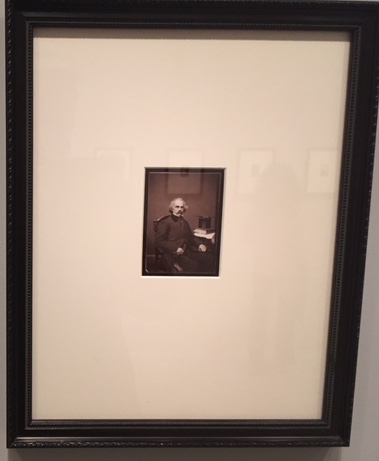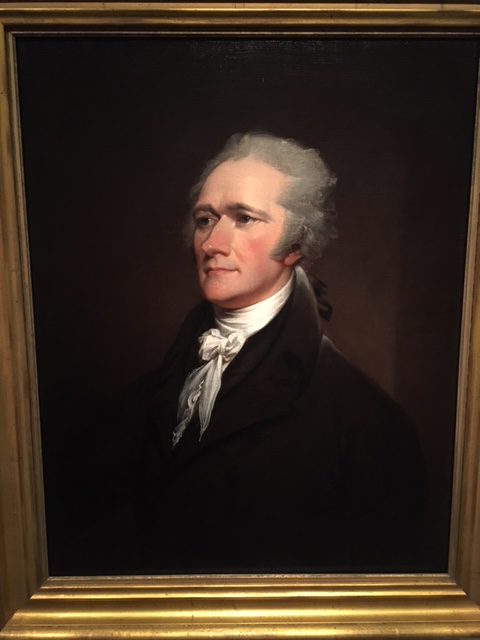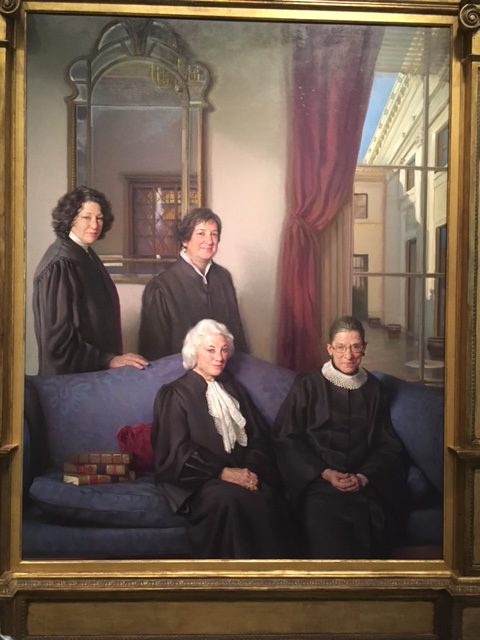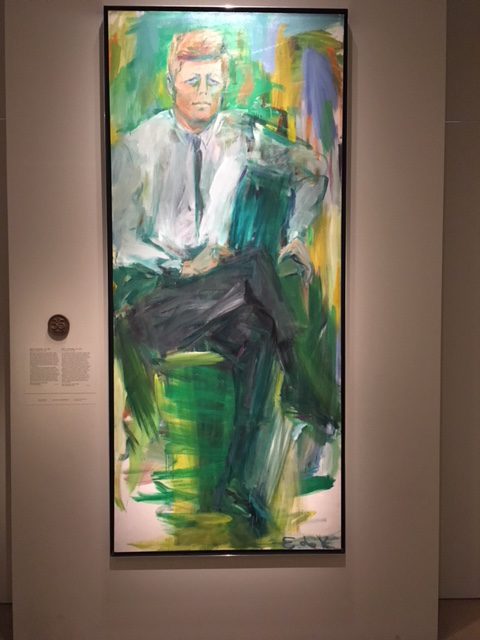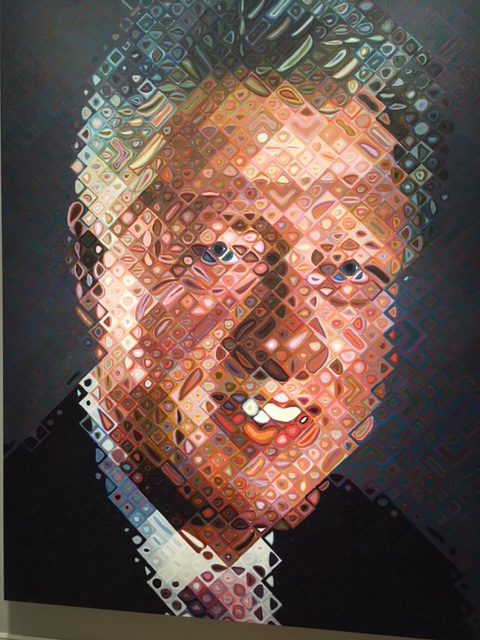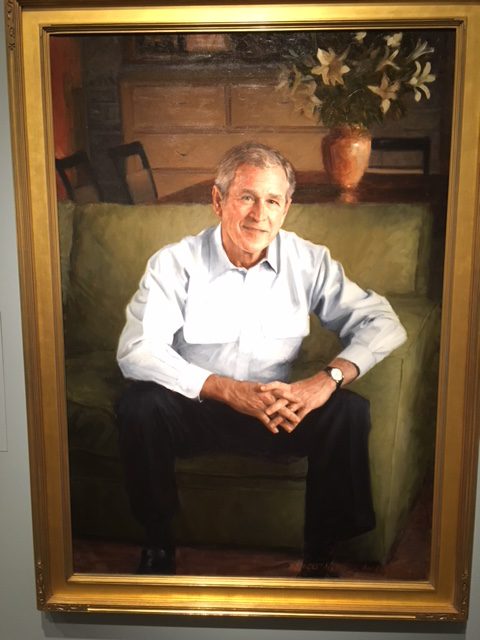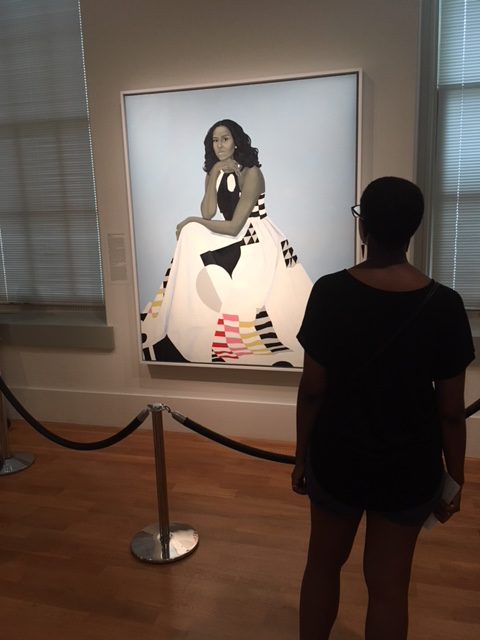I recently was in Washington, D.C. for an academic conference, and fortunately enough, the conference hotel was about three blocks from the National Portrait Gallery and Museum of American Art. I’ve been there on several occasions in the past, but given its proximity this time, I was fortunate enough to go there three times this time around.
My first stop every visit is to see the Matthew Brady Studio photographs down the hall on the main floor. Photographer Mathew Brady is often credited with inventing photojournalism in the mid-nineteenth century. In 1845, Brady began to become famous for his portraits of noted Americans. (The one at right is of author Nathaniel Hawthorne.) He attempted to sell printed reproductions of his photographs, and though the effort failed because the costs were too high, he set the stage for later celebrity photographers, such as Annie Leibovitz. Brady also realized that much of the value of his photographic portraits came from their being reproduced as engravings, woodcuts, lithographs, and the like. The original was valuable, but so were the reproductions. Today Brady is best remembered for his pictures of the American Civil War, the first war to be photographed from beginning to end. It should be noted that there were a number of photographers working for the Brady Studio who generally did not receive named credit for their work.
Following the Brady exhibit, I headed upstairs. Fans of the Chernow biography of Alexander Hamilton (and, of course, the hit musical) will find much to see in the section developed to American history. Two stood out for me. First was the John Trumbull portrait of Hamilton:
John Trumbull was a prominent revolutionary era painter who is perhaps best known for his Declaration of Independence painting. There’s a song on the Hamilton Mix Tape that was cut from the musical that sums up the events of the political side of the revolution really well:
“You ever see a painting by John Trumbull?
Founding fathers in a line, looking all humble
Patiently waiting to sign a declaration and start a nation
No sign of disagreement, not one grumble
The reality is messier and richer, kids
The reality is not a pretty picture, kids
Every cabinet meeting is a full on rumble
What you’re about to witness is no John Trumbull”
—Cut song from Hamilton
The other standout was Nelson Shanks’s “The Four Justices” featuring the only four women to have served on the U.S. Supreme Court.
The painting is huge and dominates the second floor rotunda with these four very different women. (By the way, the Ruth Bader Ginsburg biopic RBG will be showing on CNN Labor Day weekend.)
The America’s Presidents is probably the best known of the gallery’s exhibits, containing many of the iconic images of our early presidents we grew up with in our textbooks. But it was the collection of the presidents of my lifetime that really captured my attention.
Something about the colors, brushwork and “gestural” style really seems to capture who this young, dynamic president was in his too short life.
I don’t know quite how to react to this portrait of President Clinton created out of a series of tiny abstract paintings. I have to say that it is oddly compelling.
In something that was a bit of surprise to me, one of my favorite portraits of a contemporary president was that of George W. Bush by his Yale classmate Robert Anderson. President Bush requested an informal portrait painted at Camp David. While I am not a big fan of Bush’s presidency, I feel like this painting really captures who Bush is, and who he might have been if the September 11th attacks had not happened.
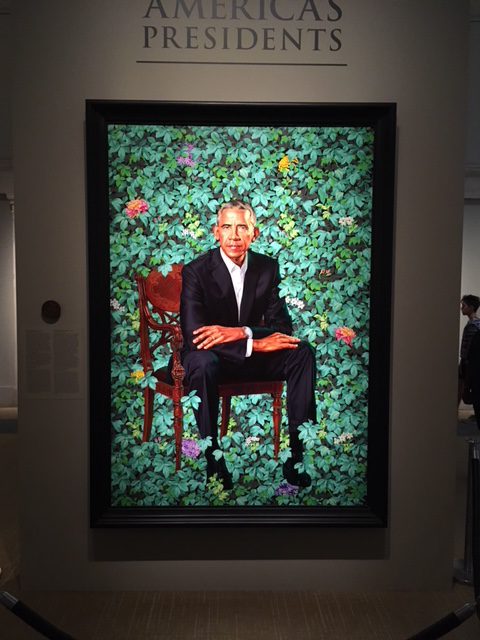
Barack Obama, painted by Kehinde Wiley, the first presidential portrait painted by an African American artist.
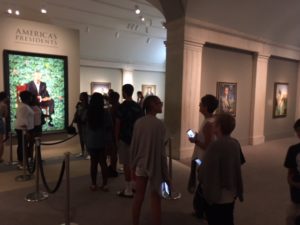 The Obama portrait was the biggest draw at the museum while I was there with a modest line of mostly young people waiting to take a selfie with the painting. Obviously Obama is the last of the presidential portraits, but it is located in the doorway that connects the hall of presidents to an exhibit called The Struggle For Justice about civil rights in its many forms. What perfect placement, seemingly in both exhibits at the same time.
The Obama portrait was the biggest draw at the museum while I was there with a modest line of mostly young people waiting to take a selfie with the painting. Obviously Obama is the last of the presidential portraits, but it is located in the doorway that connects the hall of presidents to an exhibit called The Struggle For Justice about civil rights in its many forms. What perfect placement, seemingly in both exhibits at the same time.
The final portrait I’d like to highlight is the stunning portrait of first lady Michelle Obama, painted by Amy Sherald.
I’m not an artist and have had only the simplest level of art appreciation education, but the time I spent at the portrait gallery gave me a lot to think about. Seeing the portraits of Hamilton, John Jay, and Presidents Washington and Jefferson gave me such a connection to the time of the Revolutionary War and the era Hamilton lived in. We obviously have no photos from this time, but the portraits painted from life give us a direct connection these historic and vibrant figures. The modern presidential portraits have a huge range of styles, from the realistic, casual portrait of George W. Bush, to the more stylized images of Presidents Kennedy and Clinton. But the two Obama portraits were the real standouts. The realistic image of the president stands in contrast with the more minimalist painting of the first lady.
I think my reaction to these paintings was heavily shaped by the context in which I viewed them. The line of young people who were so eager to take their smartphone pictures with President Obama’s portrait. The young African American woman with the close-cropped hair starring lovingly, admiringly, hopefully at the first lady. Doreen St. Felix, who reviewed the Michelle Obama portrait for The New Yorker, summed it up this way, “The portrait, beautiful and discomforting, is like a memory of what we never knew.”

